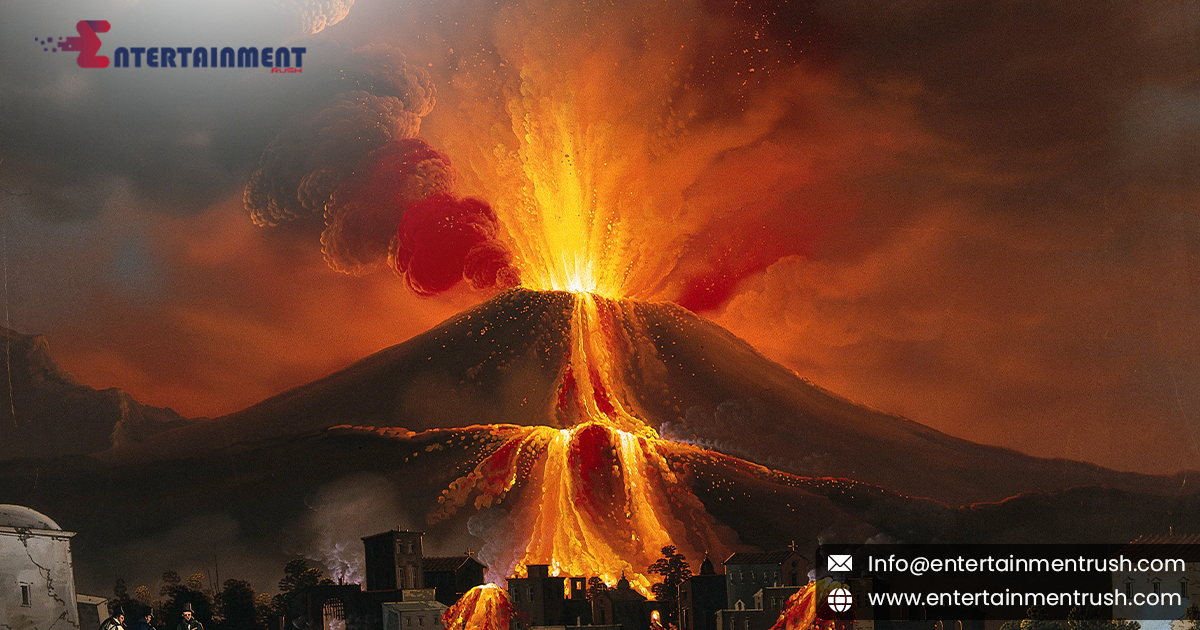The devastating effects of Mount Vesuvius’ eruption in 79 AD are best known for having struck Pompeii and Herculaneum, yet the ramifications of this volcanic disaster went well beyond these two cities. Starting on August 24th, the eruption caused a series of catastrophic natural calamities that devastated the surrounding areas, changing the topography and drastically impacting the lives of numerous Roman citizens. Although the destruction of Pompeii is the most well-known effect, this volcanic eruption’s lesser-known side effects point to a more intricate and extensive catastrophe.
The Immediate Impact on Pompeii and Herculaneum
The eruption began with a violent explosion that ejected a massive column of volcanic ash, pumice, and gases high into the atmosphere. This initial blast was followed by a relentless rain of volcanic material that buried Pompeii under several meters of ash and pumice, creating a blanket that preserved the city in an eerie, ashen tableau. However, the destruction was not confined to Pompeii alone. The neighboring town of Herculaneum, located just a few kilometers from Vesuvius, suffered a different but equally devastating fate. Herculaneum was buried under a torrent of hot, pyroclastic surges—fast-moving, superheated clouds of gas and volcanic matter that swept through the town, incinerating and entombing its inhabitants almost instantaneously. The contrasting methods of burial resulted in different preservation conditions, with Pompeii providing a snapshot of daily life preserved in ash, while Herculaneum’s heat-fused remains offer insights into the more extreme conditions faced by its residents.
Environmental Repercussions of the Eruption
The rapid destruction of these villages was not the only effect of the eruption. The extensive volcanic debris and fallout had a major negative impact on the environment. The region’s crops collapsed as a result of the buildup of volcanic material on the landscape. Ash layers covered the fields, making them unusable for farming for many years. The difficulties experienced by the survivors were made worse by the eruption’s additional contamination of water sources, which included rivers and aquifers contaminated by volcanic gasses and ash. Vesuvius turned the formerly fertile areas around him into hostile territory, which had an impact on the local economy and food supplies.
Economic Impact on the Roman Empire
Furthermore, the eruption had a significant effect on the Roman Empire as a whole. The volcanic catastrophe had an impact on the Roman economy, which depended largely on trade and agriculture. Food shortages and inflation were exacerbated by the disruption of the supply of vital crops caused by the destruction of productive farms surrounding Vesuvius. Trade and economic recovery were further hampered by the destruction of important trade routes and infrastructure in the impacted areas. The difficult duty of helping and supporting the survivors—many of whom were left penniless and homeless—was placed before the Roman authorities. The empire’s financial resources were put under strain by the cost of rehabilitation and relief efforts, highlighting the eruption’s extensive economic effects.
Psychological and Societal Impacts
The eruption had equally significant effects on society and psychology. The catastrophe’s abruptness and catastrophic scope permanently damaged the Roman people’s collective memory. A mood of fear and uncertainty was exacerbated by the destruction of property and lives as well as the realization of nature’s tremendous power. The eruption also affected Roman literature, art, and historical records on a cultural level. The catastrophic catastrophes that occurred at Pompeii and Herculaneum came to represent the vulnerability and resiliency of human existence in the face of calamities.
The Broader Legacy of Vesuvius
In hindsight, the Mount Vesuvius explosion was not only a localized disaster but also an important historical occurrence with far-reaching effects. The destruction affected the Roman Empire’s ecology, economics, and civilization far beyond the confines of Pompeii and Herculaneum. Gaining insight into these lesser-known facets of the eruption highlights the intricate relationship between natural occurrences and human history and offers a more complete picture of the disaster’s effects. The tale of Vesuvius serves as a reminder of how nature has the ability to affect human history and the world’s permanent effects.




Leave feedback about this